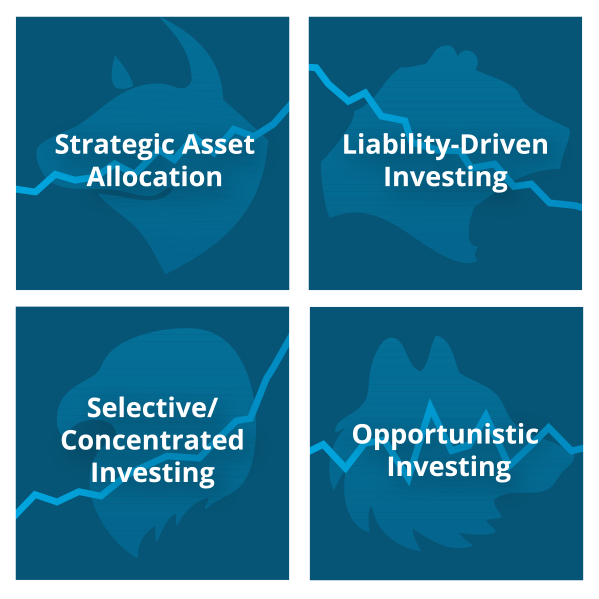
The two years preceding 2010 have resulted in a great deal of criticism of the ideas of rational economic actors and the “Efficient Markets Hypothesis” (EMH), the latter of which attempts to describe the pricing of securities markets. While an in-depth discussion of EMH and its validity is beyond the scope of this article, it is worthwhile to consider the antagonistic viewpoint on this subject, which states that markets are largely inefficient, and by extension means that it is possible for an investment portfolio manager to consistently beat the markets in terms of portfolio risk/return performance based on skill (which is contrary to EMH). But rather than make an absolute judgment on whether markets are 100% efficient or 100% inefficient, we can alternatively make the assumption that markets are sometimes “efficient” and are other times “inefficient.” If we are to take this latter stance, then how should portfolio managers best act for their clients?
This is a difficult question, because despite the many arrows slung at EMH and at Modern Portfolio Theory, few academics or industry professionals (if any) have publicly offered a means for portfolio managers to capitalize on or protect against the presence of any form of market inefficiency, whether it be perpetual or present only briefly. As such, this article will provide a cursory outline of one such possibility for a practical and systematic solution, which incorporates elements of both fundamental market/security analysis and technical analysis.
The principle behind Efficient Historical Mean Reversion (EHMR) Tactical Asset Allocation is that although markets are not always efficient, they can be for brief periods. If a series of these historical periods can be identified, then an “Efficient Historical Mean” trend line can be drawn and extrapolated into the future. This can be used to determine current market pricing inefficiencies, which will eventuallycorrect themselves in reversions to mean values over time. We can capitalize on this, as illustrated below.
BASIC STEPS TO EHMR TACTICAL ALLOCATION
Define the worldwide investable portfolio of assets and split it into the practically investable “markets” or asset types that will be considered for use in the portfolio. The division of the portfolio into narrow, concentrated markets that experience higherprice volatility than broader, more diverse markets will be more beneficial for producing above-market performance (or alpha).
Select low-expense-ratio, low-transaction-cost securities that can be traded on an intraday basis to cover each of the target asset type components or markets. These individual holdings will be repeatedly re-assessed for inclusion quantities on a regular basis.
Identify multiple historical time-points of relative market efficiency for each portfolio component “market” based on individual market characteristics. Finding such a time period or point will be largely a qualitative decision in the absence of a systematic quantitative approach or predetermined mathematical definition. Such time periods will usually be characterized by the (often brief) presence of relatively low volatility, evidence of the presence of rapid and efficient securities pricing, and the absence of substantial politically-generated market distortions.
Determine the average annualized rate of return for each potential holding based on efficient-point-to-efficient-point analysis in order to determine the “Efficient Historical Mean” return.
Project the computed Efficient Historical Mean return into the future for each portfolio holding to create a base trend line (to which we believe the security price will revert towards over time).
On a practical basis, the portfolio manager must allow for a substantial margin of error in determining the speed and degree to which the security price will revert.
Re-determine whether to include each holding and the quantity of each holding to include on a regular and frequent basis. This determination will be based on thedegree of departure of the security market price from the projected mean value of the security price. On a practical basis, the portfolio manager must allow for a substantial margin of error in determining the speed and degree to which the security price will revert. This means that greater deviations from the mean should result in more aggressive and substantial buy/sell actions.
Determine whether the reallocation buy/sell transaction is economically meaningful enough to warrant the cost of the transaction for each holding used in the portfolio.
Repeatedly reassess the overall portfolio and reallocate when appropriate by selling all holdings whose prices are substantially above their mean value and using the proceeds to buy all of those target holdings whose prices are substantially below their mean value (when and if these deviations occur).







Leave a Comment